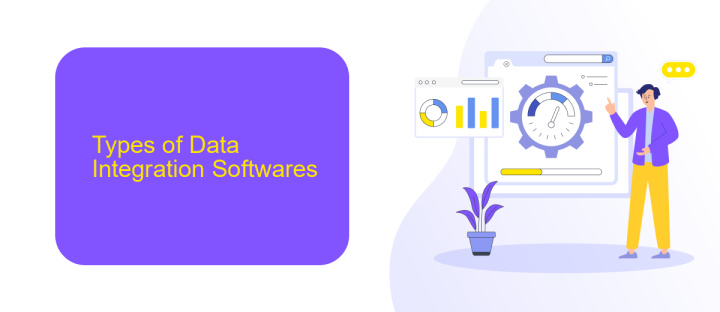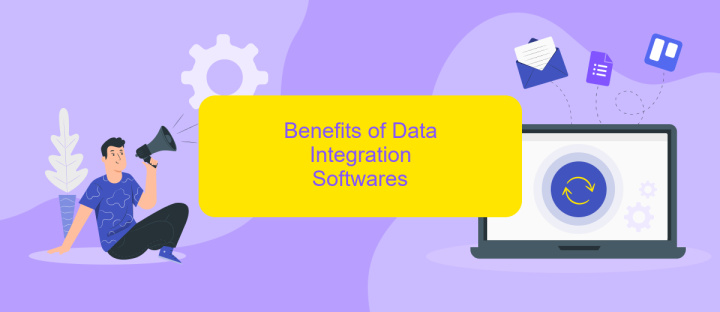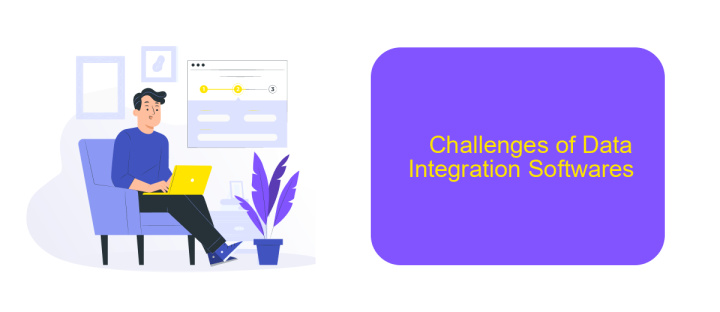Data Integration Softwares
Data integration software plays a crucial role in today's data-driven world by seamlessly combining information from various sources into a unified view. These powerful tools help organizations streamline their operations, enhance decision-making, and ensure data consistency. In this article, we will explore the key features, benefits, and leading options available in the market for data integration software solutions.
Introduction
Data integration software has become an essential tool for businesses looking to streamline their operations and ensure seamless data flow between various systems. With the increasing complexity of data environments, organizations need robust solutions to handle data from multiple sources and formats efficiently.
- Automating data workflows
- Ensuring data consistency and accuracy
- Reducing manual data entry and errors
- Enhancing data accessibility and usability
One of the leading solutions in this field is ApiX-Drive, a service that facilitates the setup of integrations between different applications and platforms. ApiX-Drive allows businesses to automate data transfer processes, ensuring that data is consistently updated and synchronized across all systems. This not only saves time but also minimizes the risk of errors, making it an invaluable tool for modern data-driven enterprises.
Types of Data Integration Softwares

Data integration software can be broadly categorized into several types based on their functionalities and use cases. ETL (Extract, Transform, Load) tools are among the most common and are used to extract data from various sources, transform it into a suitable format, and load it into a target system. These tools are essential for data warehousing and analytics. Another type includes data replication software, which continuously copies data from one database to another, ensuring synchronization and consistency across systems. Data virtualization tools, on the other hand, provide a unified view of data from multiple sources without the need for physical data movement.
API-based integration platforms, such as ApiX-Drive, are also gaining popularity. These platforms enable seamless data integration between various applications and services through APIs, reducing the complexity and time required for setting up integrations. ApiX-Drive, for instance, allows users to automate data flows between different systems without needing extensive technical knowledge. Additionally, there are cloud-based integration tools that offer scalable and flexible solutions for integrating data across cloud and on-premises environments. These tools are particularly useful for organizations adopting hybrid cloud strategies.
Benefits of Data Integration Softwares

Data integration software provides numerous advantages for businesses looking to streamline their data management processes. By consolidating data from various sources into a single, unified view, these tools enhance data accuracy and accessibility, driving more informed decision-making.
- Improved Efficiency: Automation of data integration tasks reduces manual effort, saving time and resources.
- Enhanced Data Quality: By standardizing data from different sources, these tools ensure consistency and accuracy.
- Better Decision-Making: Unified data views enable more comprehensive analysis, leading to strategic insights.
- Scalability: Integration software can handle growing data volumes, making it suitable for expanding businesses.
- Cost Savings: Reducing the need for manual data handling lowers operational costs.
Tools like ApiX-Drive simplify the integration process by offering pre-configured connectors for various applications, allowing businesses to set up integrations quickly and effortlessly. This not only speeds up deployment but also minimizes the need for specialized technical skills, making data integration accessible to a broader range of users.
Challenges of Data Integration Softwares

Integrating data from multiple sources remains a complex challenge for many organizations. One of the primary difficulties is ensuring data consistency and accuracy across various platforms. Discrepancies in data formats, structures, and standards can lead to significant issues in data quality and reliability.
Another challenge is the scalability of data integration solutions. As businesses grow and the volume of data increases, the integration software must be capable of handling larger datasets without compromising performance. This requires robust and flexible architecture.
- Data consistency and accuracy
- Scalability of solutions
- Security and compliance
- Complexity of integration processes
Moreover, ensuring security and compliance with regulations such as GDPR and HIPAA is crucial. Data integration software must provide secure data transfer and storage solutions. Services like ApiX-Drive can simplify the integration process by offering automated workflows and real-time data synchronization, thus reducing the complexity and time required for integration tasks.
- Automate the work of an online store or landing
- Empower through integration
- Don't spend money on programmers and integrators
- Save time by automating routine tasks
Conclusion
Data integration software solutions play a crucial role in modern business operations by enabling seamless data flow between disparate systems. These tools not only streamline processes and enhance productivity but also provide a unified view of data, which is essential for informed decision-making. As businesses continue to grow and diversify, the need for robust and scalable data integration solutions becomes increasingly apparent.
One notable service in this domain is ApiX-Drive, which offers a user-friendly platform for setting up integrations without the need for extensive technical expertise. By simplifying the integration process, ApiX-Drive allows businesses to quickly connect various applications and automate workflows, thereby reducing manual effort and minimizing errors. In conclusion, the adoption of advanced data integration software like ApiX-Drive can significantly enhance operational efficiency, enabling businesses to stay competitive in an ever-evolving digital landscape.
FAQ
What is Data Integration Software?
Why is data integration important?
Can Data Integration Software automate workflows?
How does Data Integration Software handle data security?
What are the benefits of using ApiX-Drive for data integration?
Apix-Drive is a universal tool that will quickly streamline any workflow, freeing you from routine and possible financial losses. Try ApiX-Drive in action and see how useful it is for you personally. In the meantime, when you are setting up connections between systems, think about where you are investing your free time, because now you will have much more of it.


